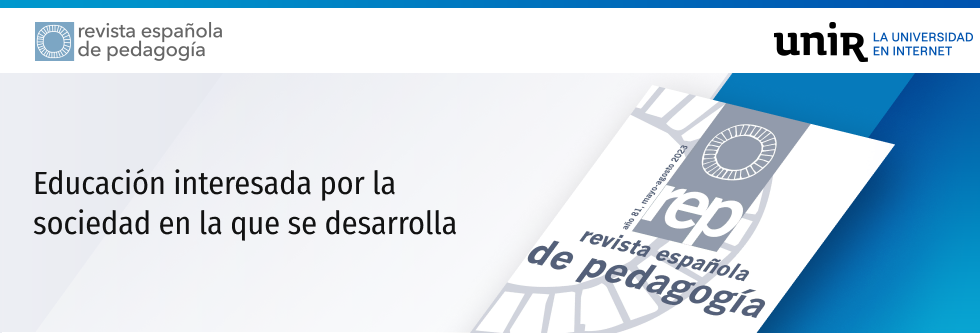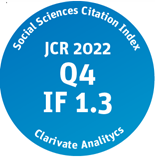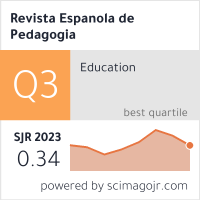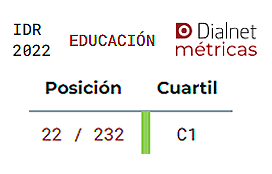Ferraces-Otero, M. J., Godás-Otero, A., & García-Álvarez, J. (2019). Cómo realizar un estudio científico en ciencias sociales, de la educación y de la salud [How to do a scientific study in the social, educational, and health sciences] (Carolina Rodríguez-Llorente)
Resumen
It is now over twenty years since, in 1999, the European Higher Education Area’s (EHEA) proposals to completely modify Europe’s system at this educational level of in the renowned Bologna declaration. It took slightly over half of this time for Spanish universities to embrace the new regulations, which became official with the publication of Royal Decree 1393/2007 (2007). As a result, the structure of official university education in Spain changed. ,
Although the measures implemented under the framework of the well-known Bologna process have been contentious, they are deeply embedded. One of this educational reform’s most controversial innovations was the requirement for students to complete or, rather submit, a Final Year Project (FYP) or Final Master’s Project (FMP) to obtain their new qualifications. These consists of research projects relating to the content students have studied in which they must demonstrate maturity in the development of the aptitudes and competences they have, at least in principle, been learning. Working on these projects should allow students to experience scientific and academic research at a basic level. Seen in this way, it should not be stressful but rather enriching. However, at the end of every year, thousands of students hoping to graduate tremble before the initials FYP and FMP. Why is this so if they have been taught how to do it? This is the crux of the matter: in most cases, they have not been given sufficient knowledge to do it. Ferraces-Otero, Godás-Otero, and García-Álvarez are no strangers to this problem. During undergraduate studies, and often at master’s level, students hardly become acquainted with scientific research; this happens most significantly in the fields of educational, social, and health sciences. Students often feel insecure and nervous when faced with a task they do not know how to tackle. But the most serious consequence of this lack of training is undoubtedly that students produce low quality work. Motivated by the need to correct this situation, Ferraces- Otero, Godás-Otero, and García-Álvarez present Cómo realizar un estudio científico en ciencias sociales, de la educación y de la salud (2019), a concise book that introduces the scientific method to students of these branches of knowledge, who are often not taught how to practise science. The main aim of this book is to help with university students’ learning and research development as much as possible so they can complete their FYPs, FMPs, or doctoral theses. More specifically, it sets out to illustrate clearly and simply the different types of experimental and quasiexperimental designs that can be used. All of this is framed within the requirements of university learning and the needs of students at this stage in this process. The book is, therefore, a useful tool that sets out to answer new researchers’ main questions about the most used designs when doing scientific studies. ,
Over five chapters, the authors skilfully illustrate and provide examples for each of the experimental and quasi-experimental designs selected for this work in order to facilitate students’ comprehension of difficult content and ensure that they carry out systematic and controlled research. To do this, they make very good use of tables, graphs, figures, and diagrams. Furthermore, the clear and concise introduction anticipates one of the book’s greatest achievements: its eminently practical character. This character, evidence of the authors’ deep pedagogical knowledge, is apparent from the first page to the last. ,
While the book specifically focuses on data analysis, especially in the experimental strategy of quantitative designs, the first chapter offers a general overview of research in the social, educational, and health sciences. Acting as an introduction, this first chapter familiarises the reader with the concept of science and the scientific method. Always offering the right amount of information to avoid confusing the reader, the authors explain the features of the scientific method and the steps it includes, at the same time as mentioning some basic research methods and techniques. The example of the structure of a research paper that concludes this first part is especially important, as there is no point in planning and carrying out a research project if we do not then know how to communicate the results. ,
This opening chapter also functions as an introduction to and link between all of the others, as readers can return to it to interpret what they read further on. Chapters two, three, four, and five in turn, despite covering different types of experimental or quasi-experimental research design (chapters two and three describe between-group single-factor and multifactor designs, while four and five cover within-group designs), are structured in the same way. Each chapter is planned so that the new researchers participate in their learning through practice and includes examples of various research scenarios from a variety of topics, which are always appropriate for the students on the courses the book addresses. Each one features a description of a case study from formulating the problem up to interpreting the results. In the following case studies, the authors leave space so that after a statement is made, the reader can complete each of the following steps in a piece of research. Each chapter also includes a model research paper, to illustrate clearly how each of the steps followed during the research should be presented. ,
In summary, Cómo realizar un estudio científico en ciencias sociales, de la educación y de la salud is a helpful guide on how to approach research design in order to write quality academic works in higher education. Its interactive character provides very useful practical experience so that undergraduate, master’s, and doctoral students can learn how to do experimental and quasi-experimental designs and share the results of their research. ,
This work is an important contribution to the field of university research as it is a tool that will not only improve its readers’ knowledge of research, but also enable them to contribute to the production of quality academic work. Accordingly, it is worth drawing attention to the authors’ efforts to take topics that, like some parts of research design such as data analysis, can be dry and complex and make them interesting. The detailed examples of how to write up correctly the information obtained in this step are one of the most notable aspects in this regard. ,
As a result, new researchers in the university setting are fortunate as reading this excellent book will provide answers to many of the questions they are likely to have while carrying out theirfirst research projects. Finally, we should not lose sight of the importance of encouraging people to take pleasure in the world of science and all of the activities it encompasses. The authors of this work can undoubtedly be sure that they will encourage many students to plunge into this world. ,
Carolina Rodríguez-Llorente ■ ,
References ,
EEES (1999). The Bologna Declaration of 19 June 1999: Joint declaration of the European Ministers of Education. Retrieved from https://www. eurashe.eu/library/bologna_1999_bologna-declaration- pdf/ (Consulted on 2019-12-23). ,
Royal Decree 1393/2007, of 29 October, establishing the organisation of official university education. Spanish Official Gazette, 260, of 30 October 2007, pages 44037-44048. Retrieved from https://www.boe.es/boe/dias/2007/10/30/pdfs/ A44037-44048.pdf (Consulted on 2019-12-23).
Citación recomendada | Recommended citation
Rodríguez-Llorente, C. (2023) . Ferraces-Otero, M. J., Godás-Otero, A., & García-Álvarez, J. (2019). Cómo realizar un estudio científico en ciencias sociales, de la educación y de la salud [How to do a scientific study in the social, educational, and health sciences] (Carolina Rodríguez-Llorente). Revista Española de Pedagogía(1). https://www.revistadepedagogia.org/rep/vol0/iss1/6
Licencia Creative Commons | Creative Commons License
Esta obra está bajo una licencia internacional Creative Commons Atribución-NoComercial 4.0.
This work is licensed under a Creative Commons Attribution-NonCommercial 4.0 International License







Commentarios | Comments
Ferraces-Otero, M. J., Godás-Otero, A., & García-Álvarez, J. (2019).